
Back to Blogs
Discover
Discover The Abbey of St Edmund
In Medieval times, The Abbey of St Edmund was one of the richest, largest and most powerful Benedictine monasteries in England and people came from all over Europe to visit the Shrine of Saint Edmund, the first Patron Saint of England.
The Abbey was one of the most famous and wealthy pilgrimage locations in England
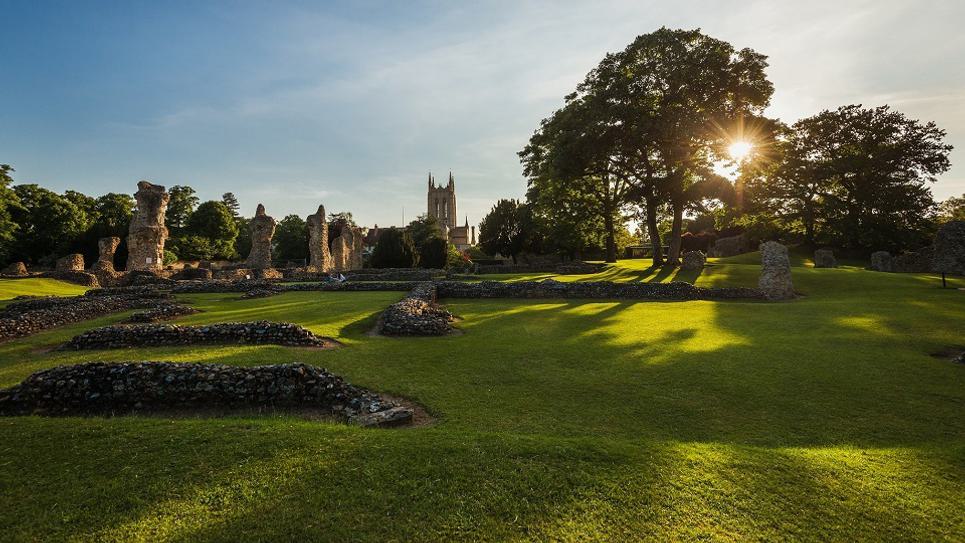
Photo: Tom Soper
The Abbey was one of the most famous and wealthy pilgrimage locations in England, visited by royalty.
Edmund, King of East Anglia, was killed by The Danes on 20 November 869, after refusing to give up his Christian faith. He was tied to a tree and shot full of arrows before being beheaded.
In 903, the body of Saint Edmund, was moved to the Anglo-Saxon settlement of Beodericsworth (later known as Bury St Edmunds).
Although, St Edmund’s body was moved to London in 1010 for safe keeping when The Danes were again marauding through East Anglia but three years later his body was returned to Beodericsworth.
The Abbey Was Founded Over 1000 Years Ago
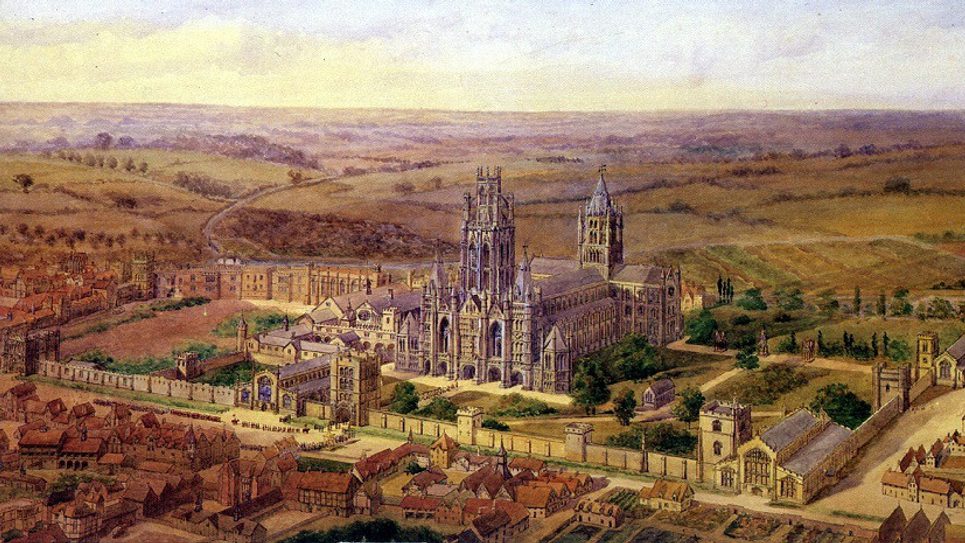
In 1020, King Cnut had a stone church built for Edmund's body and 13 Benedictine monks from St Benet’s Abbey at Hulme in Norfolk and 7 from Ely arrived.
This was the beginning of the Abbey of St Edmund, 1000 years ago, and it became a site of great pilgrimage to St Edmund’s shrine.
The shrine brought visits from Royalty and the Abbey became one of the most famous and wealthy pilgrimage locations in England.
It also attracted pilgrims from abroad as Edmund was a major saint in the Catholic Calendar. Such pilgrimages could take up to a year to complete and brought a lot of wealth to the abbey. Pilgrim badges were collected as badges of honour from where they had visited.
Abbot Baldwin
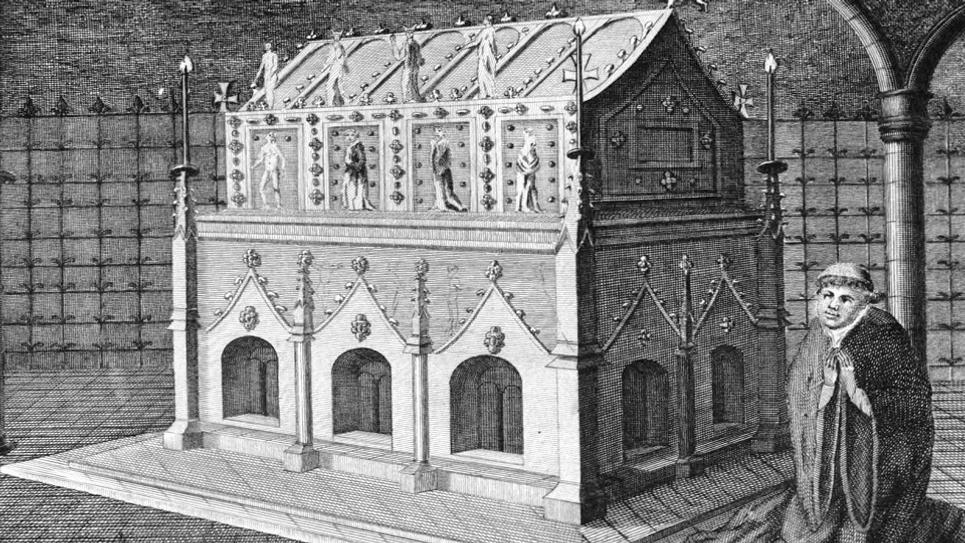
The Shrine of St Edmund. Photo: Wikipedia Creative Commons.
In 1081, Abbot Baldwin embarked on a building programme that was to last well over 100 years, culminating in a Romanesque Abbey church. He was also responsible for laying out the town in 1065, which is considered the oldest purposefully laid out town in the country, the medieval grid is still evident today.
The monks charged tariffs on every economic activity, including the collecting of horse droppings in the streets! The Abbey even had the power to mint its own coinage.
A great Abbey Church would be built and then consecrated on 29 April 1095 with the bejewelled shrine of St Edmund standing behind the high altar. The Abbey church’s final length was 505 feet (154 metres) with the majestic West Front 246 feet (75 metres). At over 150 metres long the church was one of only a few of its date to be built on such a large scale in this country.
Abbot Samson
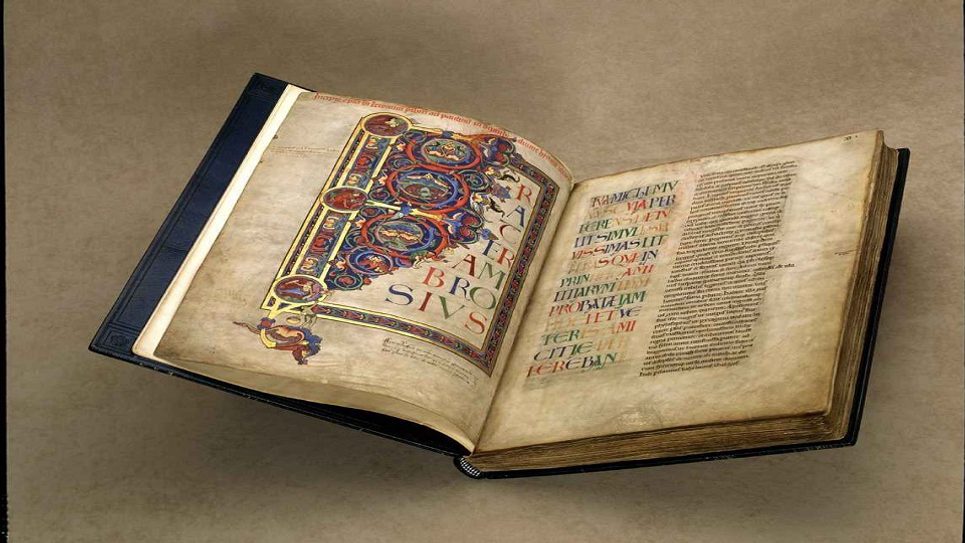
The Bury Bible. Photo: St Edmundsbury Chronicle
During the abbacy of Abbot Samson (1182 - 1211) Moyse’s Hall (now the town’s museum) was built and the wonderful Bury Bible by master Hugo was written.
Hugo may also be responsible for carving the Bury St Edmunds Cross, or 'Cloisters Cross' - an unusually complex 12th-century Romanesque altar cross, carved from walrus ivory, now on display at the Metropolitan Museum of Art in New York. A replica is on display today in St Edmundsbury Cathedral Treasury.
Much is known about Abbot Samson from The Chronicle of Joscelin De Brakeland, a monk of the abbey who kept a diary towards the end of 12th Century.
The Magna Carta Connection
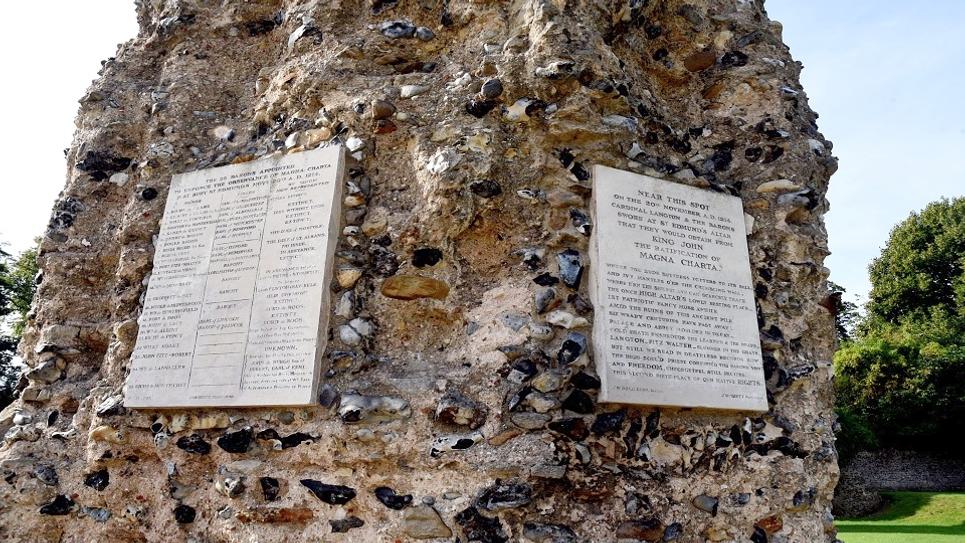
The site where the Charter of Liberties was agreed within the Abbey of St Edmund
The Abbey’s history is one filled with intrigue, mystery, riots and unrest but undoubtedly its most important role was in the Magna Carta story.
In 1214 a band of barons met in secret in the Abbey, and here they swore an oath to force King John to agree to a Charter of Liberties. The most likely date for this meeting is November 20, 1214 because that was St Edmund’s Day.
That Charter – The Magna Carta, finalised the following year helped form the basis of the United States Constitution, and the Human Rights Act.
The people of Bury St Edmunds have celebrated this link for hundreds of years with the town’s motto ‘Shrine of the King, Cradle of the Law’, which refers to our historic links with King Edmund (the first patron saint of England) and the Barons’ meeting which led to the creation of the Magna Carta. Near the ruins of the Abbey of St Edmunds, nestled in the Abbey Gardens, is ‘Our Liberty’, a lasting memorial to Bury St Edmunds’ link to the Magna Carta.
The Dissolution of the Abbey
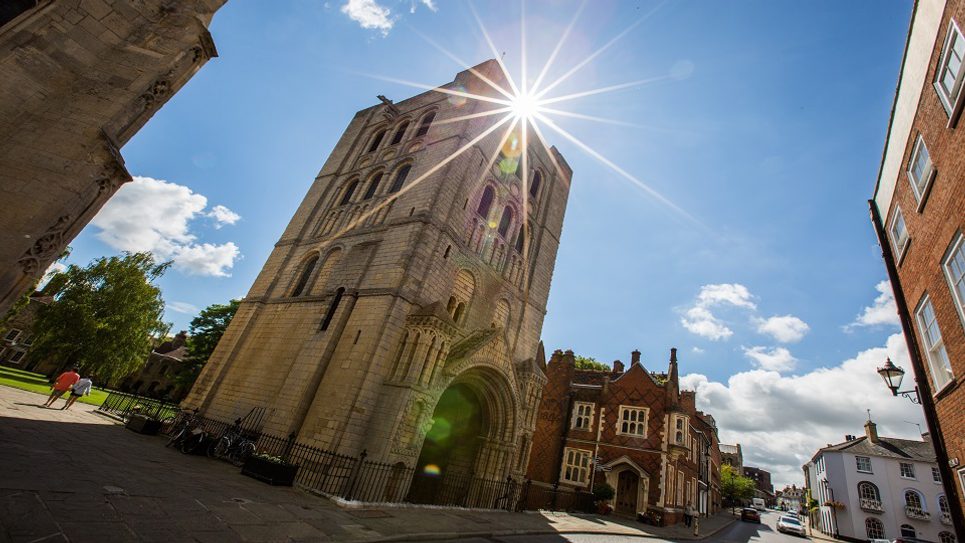
The Norman Tower, the principal gateway into Bury St Edmunds' great Abbey church. photo: Shawn Pearce
The Abbey continued to thrive throughout the 13th century but relations with the townspeople were rarely cordial. Matters came to a head in 1327 in a summer of riots, though disputes rumbled on throughout the 14th century. The Abbey suffered other problems too, notably damage to the west tower through collapse and later a serious fire. Despite these setbacks Bury St Edmunds remained politically important throughout the 15th century.
The last great procession to enter the Abbey Church before its dissolution was the funeral cortege of Mary Tudor, Queen of France and Henry VIII’s favourite sister. She was buried in the Abbey Church in 1533. She is now buried in St Mary’s Church within the abbey precinct.
In 1539, as part of the Dissolution of the Monasteries, the Abbey was surrendered to Henry VIII. As one of the five richest abbeys in the country, hundreds of years of royal patronage ensured it was one of the last to be dissolved. It was sold on by the Crown, the Abbot’s Palace survived as a house until 1720 but the Abbey precinct became a quarry for building material for the townsfolk and the shrine of St Edmund was stripped and broken. It is said you won’t find any abbey stone any further than six miles outside Bury St Edmunds, the distance covered by a cart and oxen there and back in a day.
The Abbey Ruins Today
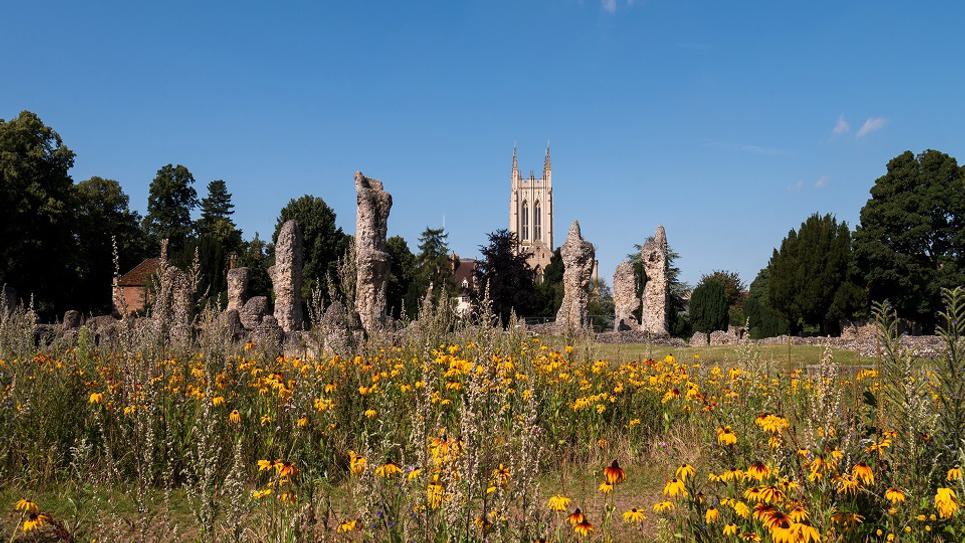
In 1831, after 300 years of neglect, the grounds (owned by the Marquis of Bristol) were laid out as a botanic garden created by Nathaniel Hodson and became the Abbey Gardens you see today, an award-winning 14-acre park, and visited by 1.3 million people from all over the world every year.
In 1902 notable academic M.R. James, best remembered as a writer of ghost stories, discovered a manuscript fragment which led him to find the location where the five abbots were buried in Chapter House.
Today, the Abbey remains are extensive and include the complete 14th century Abbey Gate and Norman Tower, as well as the impressive ruins and altered west front of the immense church, St Mary’s Church and part of St Edmundsbury Cathedral.
Visitors enter the abbey complex today through the impressive Abbey Gate complete with its portcullis. The original gateway, entrance to the great courtyard of the monastery, was destroyed in 1327 during the riots by the local people, who were angry at the power of the monastery. The Abbey Gate you can see today with its west side arrow slits was built in the 14th Century.
The Norman Tower, was the principal gateway into Bury St Edmunds' great Abbey church, and was built between 1120 and 1148 facing its great west door. It is one of the oldest Norman buildings in England and one of the most complete Norman buildings in the UK as it has never been altered. It still serves as the bell tower of St Edmundsbury Cathedral, formerly St James’ Church.
A church has stood on the site of the cathedral since at least 1065, when St Denis's Church was built within the complex of Bury St Edmunds Abbey. In the early 12th century the Abbot Anselm had wanted to make a pilgrimage along the Way of St James to Santiago de Compostela. He was unsuccessful and instead rebuilt St Denis's and dedicated the new church to Saint James, which served as the parish church for the townspeople.
The church was largely rebuilt, starting in 1503, in the Perpendicular style by John Wastell, a master mason who also worked on King's College, Cambridge.
St James’ Church became St Edmundsbury Cathedral in 1914.
Where is St Edmund?
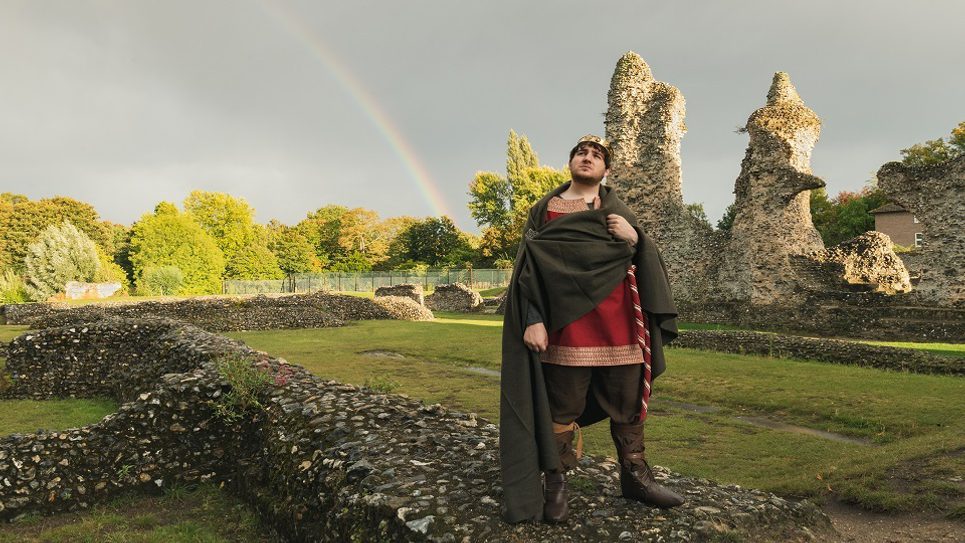
Saint Edmund’s final resting place is a great mystery; some believe he is buried somewhere within the abbey precincts!
In his book Edmund – In Search of England’s Lost King, historian Dr Francis Young explores the theory that St Edmund’s remains still lie within the abbey ruins today.
In 2013 he came across a document that was previously unknown, from a monk that said Edmund’s body was placed in an iron chest. In his book Dr Young explains his theory that St Edmund may be buried in the monks’ cemetery which lay beneath the former tennis courts (now the wildflower labyrinth) in the Abbey Gardens and on consecrated ground.
Related Posts
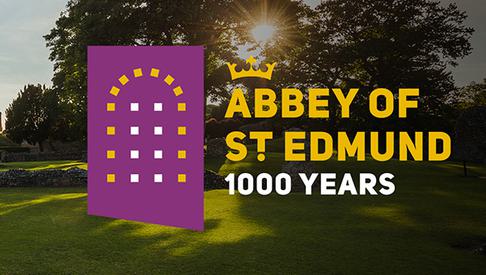
Abbey of St Edmund 1000th Anniversary…
View More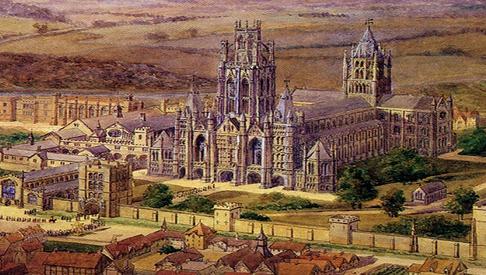

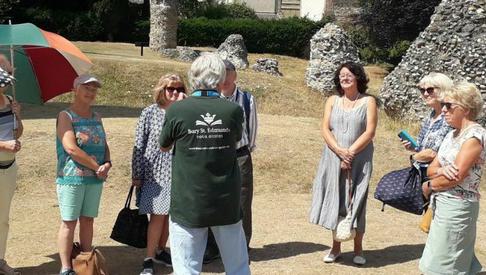
New-Look Guides Reveal their Abbey Tours
Bury St Edmunds Tour Guides Offer Abbey-specific tours…
View More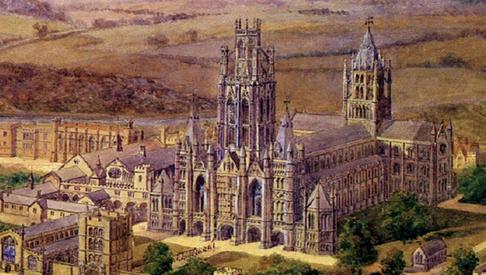
43 Facts About the Abbey of St Edmund
The Abbey of St Edmund was one of the most famous and…
View More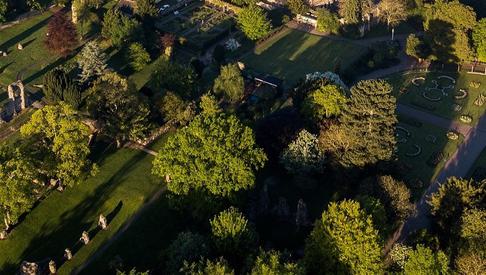
Meet The Stonemason Who Takes Care of the…
As Bury St Edmunds prepares to celebrate 1,000 years…
View More
10 Things You May Not Know About St Edmund
Bury St Edmunds takes its name from King Edmund, the…
View More
Related Blogs

News
Abbey Gardens in Top 20 Most…
The historic Abbey Gardens in Bury St Edmunds with…

News
Abbey Project Awarded…
The project aims to conserve and protect the ruins;…

News
Cycle the Wolf Way
Winding its way around many of the best bridleways,…
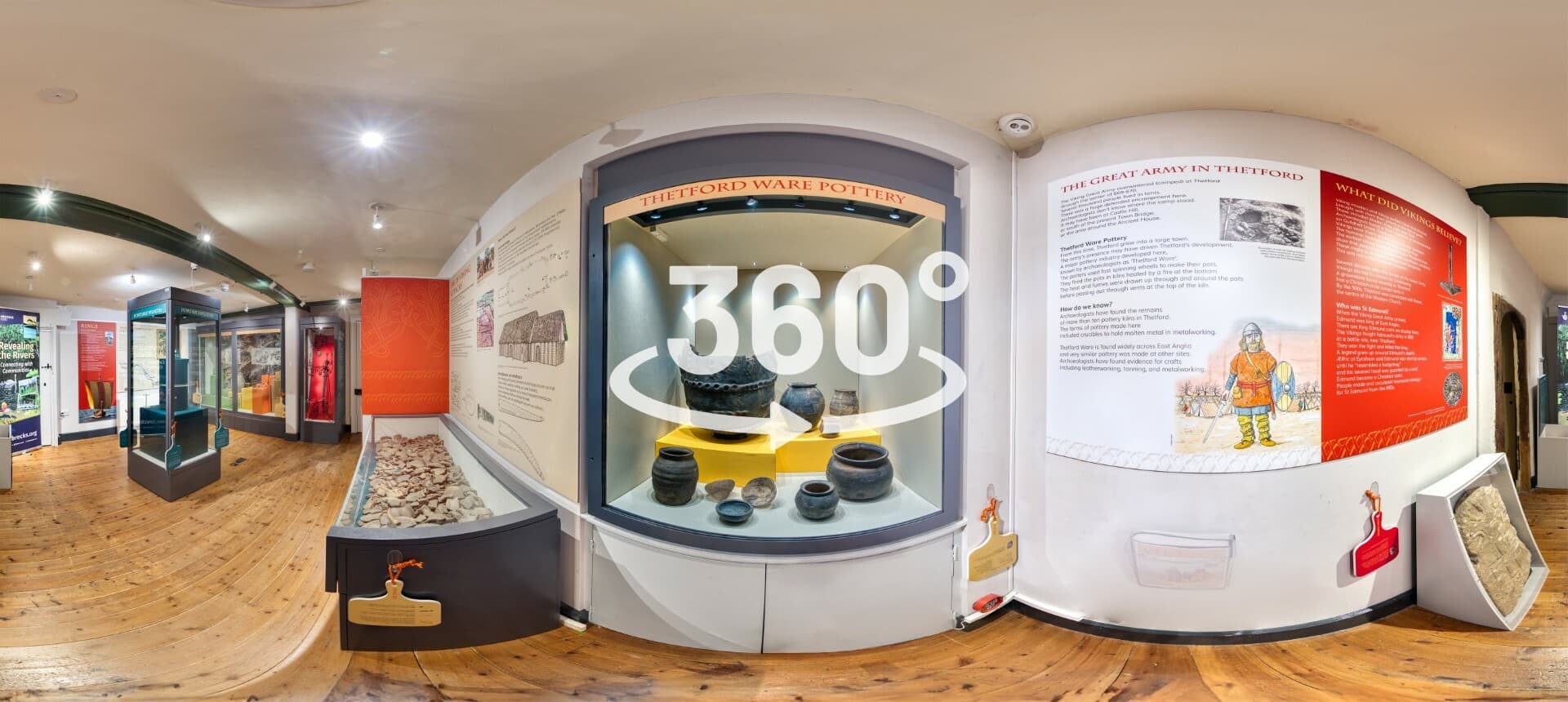
News
360° Degree Vikings
The Brecks Fen Edge and Rivers Landscape Partnership…

News
Abbey Treasures
From Cambridge to Rome, we go in search of the…
Latest news

News
How to Spend Betwixtmas in Bury St Edmunds & Beyond
The post Christmas period is the perfect time to get out and about before the new year kicks in, and you’ll find plenty of activities and places to visit in Bury St Edmunds and beyond.

News
Parents Guide to Pre Christmas Entertainment
It's the school holidays and with Christmas just around the corner we've put toegther a guide on places to take the kids to keep them entertained until Santa visits!

News
Enjoy a Festive Afternoon Tea in 2025
Celebrate the Christmas season with a festive afternoon tea in Bury St Edmunds & Beyond...

News
Festive Winter Walks
Get outside and enjoy the fresh crisp winter air with one of these walks in Bury St Edmunds and Beyond!

News
Bury Tour Guides to launch new tours next year after successful 2025
Bury St Edmunds Tour Guides to Introduce new tours in 2026 and continue the successful Food and Drink Tours!

News
New in Bury St Edmunds For 2026
A sneak peak into new attractions visitors can enjoy in Bury St Edmunds in 2026.

News
Baby It's Cold Outside... Things To Do When the Weather Turns Frosty
Just because the temperature’s dropped doesn’t mean the fun has to! If you’re visiting town during the chillier months, there’s still plenty to see, do, and experience.

News
Places to sit by a roaring fire in Bury St Edmunds & Beyond
Warm up by a roaring fire this winter in Bury St Edmunds & Beyond...

News
Christmas Park and Walk 2025
Additional parking has been provided by West Suffolk Council in partnership with Greene King this Christmas.
